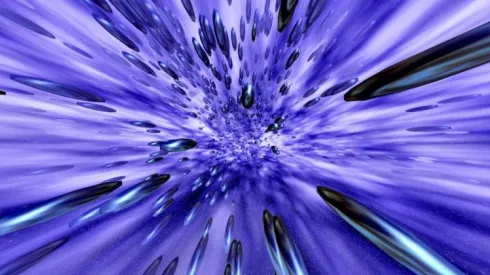
The imaginary part of quantum mechanics actually exist, say scientists
It was usually assumed that complex numbers, those containing a component with the imaginary number i (i squared equals minus one), are only a mathematical trick. A Polish-Chinese-Canadian team of scientists has proven, however, that the imaginary part of quantum mechanics can be seen in action in the real world, the Centre of New Technologies at the University of Warsaw reports.
-

Warsaw researchers develop neural network using 'massive' photons
Researchers have become the first in the world to build a neural network (artificial neuron) based on 'massive' photons - light particles behaving as if they had mass (called polaritons).
-

Scientists ‘go ashore’ with embroidering DNA threads
It has been known for some time how to use DNA strands to embroider 2D shapes and build nanometer-sized structures. But these structures were stable only in the aquatic environment. Now scientists have shown how to go "ashore" with the solutions and use DNA to produce super-resistant nano-objects.
-

Artificial life of shape-shifters
“Any sufficiently advanced technology is indistinguishable from magic” (Arthur C. Clarke). Researchers are working on a shape-shifting robotic material able to transform into any object or machine. Strong like solids and transformable like fluids, will T-1000 terminators knock on our doors soon?
-
![Photons with an energy of 200 teraelectronvolts are most likely emitted by protons colliding with interstellar gas. The primary source of protons is pulsar HAWC J1825-134 (in the orange circle), the role of the actual accelerator is played by the star cluster [BDS2003] 8 (dark blue). (Source: HAWC)](/sites/default/files/styles/srednie_zdjecie_490x275/public/202103/IFJ210318b_fot01.jpeg.webp?itok=MSxd5gzK)
HAWC: Are photons of extreme energies coming from the Galaxy's largest accelerator?
For years, in the vastness of our galaxy, astrophysicists have been tracking down pevatrons – natural accelerators of particles with monstrous energies. Thanks to the HAWC Observatory for Cosmic Radiation, another probable trace of their existence has just been found: photons with some of the highest energies. However, what is particularly important is that this time the high-energy photons have not only been recorded, but also their probable place of origin has been determined.
-

Uncovering exotic molecules of potential astrochemical interest
Looking at the night sky, one’s thoughts might be drawn to astrochemistry. What molecules inhabit the vast spaces between the stars? Would we see the same molecules that surround us here on Earth? Or would some of them be more exotic—something rarely observed or even unknown?
-

A monumental particle accelerator in the Cygnus Cocoon
At the heart of Cygnus, one of the most beautiful constellations of the summer sky, beats a source of high-energy cosmic ray particles: the Cygnus Cocoon. An international group of scientists at the HAWC observatory has gathered evidence that this vast astronomical structure is the most powerful of our galaxy's natural particle accelerators known of up to now.
-

Researchers find ‘precise mixture’ of light and sound
A Polish-German research team have mixed nanoscale sound waves with light quanta by using an artificial atom that converts vibrations of a sound wave into single quanta of light - photons with unprecedented precision.
-

Angular momentum in nuclear fission like a bursting balloon
The angular momentum in nuclear fission is similar to a bursting balloon, says new research.
-

Photons like massive particles with spin?
“We managed to use light, i.e. massless photons, to make something that resembles a group of particles that have spin. In this case, the polarization of light replaces spin,” says Professor Jacek Szczytko from the University of Warsaw.












